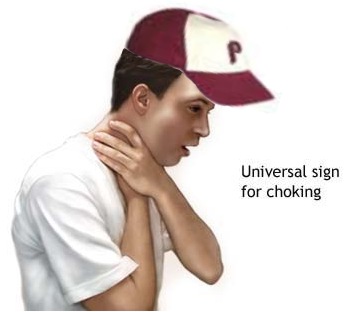Last weekend I had the opportunity to travel to that distant land known as "Ohio" for a business trip. While I was there, I was priveliged to observe an exhibition of the natives, specifically the Indians, as they competed against the visiting Minnesota Twins. Three months ago, I would have expected this to be something of a lackluster contest, the Indians being the young, struggling team everyone but Rob Neyer anticipated and the Twins easily out-pacing Chicago for the division lead, but then a prophet I'm not. An engineer, I am, so when I had to go to this conference for engineers last weekend, I was pleasantly surprised to find the Indians a single game behind the Twins in the AL Central standings, having won the first two out of the three-game series against their division rivals.
The entire town was a-buzz with pennant fever, their favorite team having just won six straight games, including the aforementioned two against Minnesota, and ten of their last eleven games. The Indians had a 63-54 records, a tie for the division lead in their sights, and the semi-immortal Chad Durbin pitching for them that Sunday afternoon. Durbin, while not exactly this guy:

Rapid Robert 
...did manage to pitch five shutout innings, extending his scoreless streak to 14 consecutive innings, which was belied by his 5.88 ERA entering the game. Even though the innings were, technically, "scoreless" Durbin was in trouble a lot. He had two on with none out in the second inning, two on with one out in the fifth, and bases loaded with only one out in the fourth before saving himself with a timely strikeout or some surprising defensive help.
Speaking of defensive help, the Twins weren't much for their starting pitcher, Terry Mulholland. Mulholland, as you may know, has pitched for ten different teams in his major league career, but hasn't pitched well as a starter for a full season since George Bush was President. No, the other one.
Mulholland's box score reads pretty nicely form that day: 8.0 innings, one earned run, only one walk, scattering six hits, no homers. Nice, right? Well, in reality, he pitched even better than that. The box score also indicates that te Twins made two errors that day, one of which was Mulholland's own throwing error that allowed Omar Vizquel to remain safe at first in the first inning, but there were at least two other plays that might have been interpreted as errors depending upon your perspective. For example, the play-by-play on one at-bat in the third inning reads this way:
Terry Mulholland pitches to Coco Crisp
Pitch 1: strike 1 (swinging)
Pitch 2: ball 1
Pitch 3: in play
C Crisp reached on infield single to third, J Phelps to third
How does a runner on second advance to third base when the ball is hit to third base? Right, when the thirdbaseman throws to first to get the batter, but the throw skips past him, which is exactly what happened. Why is this not scored an error? You got me. But the next batter, Grady Sizemore, hit a sac fly that scored a second run, an earned run, that should never have been.
And that wasn't the end of the shenanigans. In the fifth inning, Omar Vizquel reached on an "infield single to second" according to the play-by-play, that should also have been an error, when Luis "Oh-for-Th"Rivas' throw pulled Justin Morneau off the bag. No problem, though, Mulholland indices the next batter, Matt Lawton, to ground into an inning-ending double play to First base, but Christian Guzman can't get the throw on-line, and Lawton's safe on a "fielder's choice." If I were Mulholland, I'd start choosing different fielders, y'know?
As a side note, the conference I attended was in the Mariott in downtown Cleveland, which happens to be the place where visiting teams stay when they play the ndians, so we saw a few of the players walking in the lobby. Mulholland, even after losing nearly 20 pounds this spring at age 41, looks a lot leaner in person than he does on TV. Maybe it's the goatee. And I saw someone else, who looked familiar, but I wasn't sure, so I looked up the Twins' website on ESPN.com to check the pictures, and sure enough, it was Christian Guzman. Except his bio says he's 6'0", 205 lbs. Well, I'm about 6'5" myself, and this guy wasn't close to 6', more like 5'9", tops. Just so you know. Don't believe everything you read. Except from me.
Getting back to the game, sportscasters often say something like, "Neither starting pitcher figured in the decision..." when the starters don't get credit for a win or loss, but really, they do figure in the decision. Think about it: If you're a manager, and you have the choice of a starter who will pitch five shutout innings or a starter who will pitch eight innings and allow one earned run, which do you choose? Of course, you choose the guy who gives you the best chance to win, which is the guy who will pitch effectively longer, as Mulholland did.
The Twins, thanks to Mulholland's effort, were able to bring in their best setup men, J.C. Romero and Juan Rincon, to pitch the ninth inning, when the game was tied at 2-2. By contrast, Indians' manager Eric Wedge had to piece together five different relievers from the sixth inning on, the first of whom, Rafael Betancourt, blew the 2-0 lead they had, and the last of whom, Rick White, blew the game altogether in extra innings.
This guy:

Bob Wickman

...actually pitched pretty well for his inning, which is about all he can stand these days before is elbow threatens to fall off. Bob Wickman came up through the Yankees farm system and won 14 games as a starter in 1993, mostly in spite of himself, as his 4.63 ERA was actually above the league average that year. Wickman's trademark pitch is a sinker. This pitch is rendered more effective by the fact that his right index finger is a little shorter than it should be. Wickman grew up in Wisconsin and lost the tip of that finger in some kind of accident with farming equipment. It's a little tough to narrow down exactly how this happened, since in Wisconsin I think most kids ride farming equipment to school. (That's the only interesting thing I know about Wickman. Mostly I just wanted to post that collage I took with my digital camera at the game.)
Meanwhile, back at the ranch, the Twins' closer was fresh for the bottom of the tenth, and set the Tribe down in order for his 34th save of the season. Sadly, my friend and I missed the exciting, extra-innings homer Corey Koskie hit to win the game for the Twins, since we had to leave after the ninth inning to catch our flights. But it was still great to visit Cleveland and add to my collection of coffee mugs purchased in the corresponding Major League City. Nine down, 21 to go!
The doorman at my hotel, when I asked him about the outcome of the game, told me the INdians had lost it in the tenth and then followed his response with, "Well, guess there's always next year." I was astonished at his lack of hope, especially considering how well they'd played recently and the fact that they were still only 2.0 games back with a month and a half left to play, but maybe he knew something I didn't. The Tribe, you see, immediately proceeded to dig their own graves, losing seven straight games to place themselves 8.5 games out of the Wild Card lead, behind three other teams, and 7.0 games behind the Twins for their own division. Guess there's always next year, right?
More about Cleveland...
Cleveland, far from being the Siberia of the Major Leagues that it became in the late 1980's and early 1990's, is actually a proud little city these days. The city has been revitalized significantly since economic times and the diminished steel industry left the place in dire straits. The team, too, saw some rough times, as five different managers combined to lead the Tribe to seven straight losing seasons from 1987-93, and a disastrous accident took two Cleveland players' lives, and took any hope of competing that year, in spring training of 1993.
But since that time, from 1994-2003, only the Braves and the Yankees have won more games or won a higher percentage of them. The Tribe made five straight and six of seven playoff appearances starting in 1995, and they were leading their division when the strike hit in 1994, exactly ten years to the day before I arrived in Cleveland last week. They timed it perfectly, with the team getting good just about the time the new stadium opened, and became the model franchise for the rest of the major leagues in the mid to late 1990s.
A while the new Jacobs' Field may only be a few blocks from where Cleveland Municipal Stadium ("The Mistake by the Lake") used to stand, it feels much farther than that. The view, while sadly obscured in part by Gund Arena is still better than no view at all, or, as was the case with the Mistake, a view of 70,000 empty seats. Incidentally, shouldn't the Cubs play in a place named for a company that makes stuffed animals?
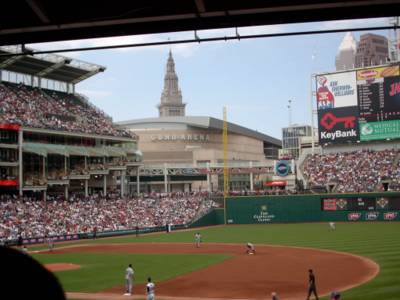
Jacobs Field

Jacobs Field and its football and basketball counterparts are a big part of the city's rebirth, as is the identity it has established for itself as the home of rock 'n roll, or at least, of the Rock and Roll Hall of Fame. Part of this identity is evidenced by the slew of interestingly decorated sculptures of guitars around the city, as you can see:

Guitars

There are dozens of these around town, each with its own interesting flavor to it, and all of them pretty cool, if I do say so myself. This guitar motif, and its inherent coolness, seems to me in stark contrast to, oh, say, where I live. Bethlehem, PA, while not quite the booming metropolis that Cleveland is, nevertheless has found itself in need of some revitalization of its own, thanks to the current lack of Bethlehem Steel, well, existing. Except Bethlehem didn't go out and get something "cool" with which to identify the city. They got mules. Lots and lots of horribly decorated mules.

Bethlehem mule

Bethlehem, formerly but no longer a booming steel and coal town, once relied heavily on the canals that line much of the East Coast, and canal boats were pulled by, you guessed it: Indentured Servants. And mules. So we've got the damn things all over town, and you couldn't put the whole lot of them together and get as much Cool as you'd get out of any one of the guitars in Cleveland. Oh well. What can you do?
I'll tell you what you can do: You can get your keester over to northern Ohio for an Indians game!
Even if they lose, you win.

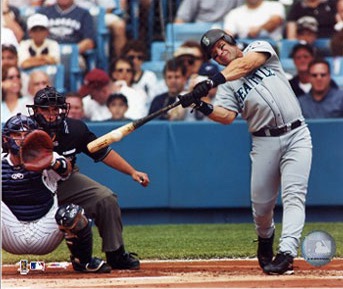
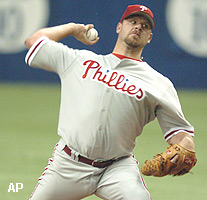


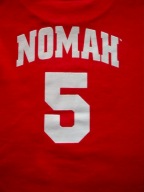
 The Red Sox ridded themselves of a highly paid player they could not re-sign, in Nomah, and a minor league outfielder who may or may not become a major league outfielder in three or four years. They received a shortstop with a good defensive rep, who has hit well in the past, but currently stinks very much bad with the bat, in
The Red Sox ridded themselves of a highly paid player they could not re-sign, in Nomah, and a minor league outfielder who may or may not become a major league outfielder in three or four years. They received a shortstop with a good defensive rep, who has hit well in the past, but currently stinks very much bad with the bat, in  From the Twins' standpoint, they've given up a firstbaseman making three million bucks who hit like a journeyman middle infielder and they got a pitching prospect, which, while not actually existing, is better than a poke in the eye with a sharp stick. It's also less expensive than paying signing bonuses to the draft picks they have gotten in return for Mientkiewicz when he left as a free agent after the season. Sadly, they had a chance to turn Mientkiewicz into Kris Benson, who, while not fooling anyone into thinking he'll ever be the player you'd expect from a #1 overall draft choice, is also exactly the #3-type starter the Twins need, instead of the three #5 starters they do have. Instead, Benson is rounding out the Mets assemblage of #3 starters, along with Steve Trachsel and Victor "JUUUUSSSTTT...A bit outside" Zambrano. You'd think these two teams could help each other out a little!
From the Twins' standpoint, they've given up a firstbaseman making three million bucks who hit like a journeyman middle infielder and they got a pitching prospect, which, while not actually existing, is better than a poke in the eye with a sharp stick. It's also less expensive than paying signing bonuses to the draft picks they have gotten in return for Mientkiewicz when he left as a free agent after the season. Sadly, they had a chance to turn Mientkiewicz into Kris Benson, who, while not fooling anyone into thinking he'll ever be the player you'd expect from a #1 overall draft choice, is also exactly the #3-type starter the Twins need, instead of the three #5 starters they do have. Instead, Benson is rounding out the Mets assemblage of #3 starters, along with Steve Trachsel and Victor "JUUUUSSSTTT...A bit outside" Zambrano. You'd think these two teams could help each other out a little!
 From the Expos standpoint, well, they got rid of a player who was clearly, vocally unhappy in Montreal, making SIX MILLION DOLLARS, or $1.5 mil per homer, and they got another shortstop making almost six million dollars, and hitting even worse. And some prospects. Hopefully the new owners will like prospects, because that all that's likely to be left by the time the team is sold.
From the Expos standpoint, well, they got rid of a player who was clearly, vocally unhappy in Montreal, making SIX MILLION DOLLARS, or $1.5 mil per homer, and they got another shortstop making almost six million dollars, and hitting even worse. And some prospects. Hopefully the new owners will like prospects, because that all that's likely to be left by the time the team is sold.
 And from the Cubs' view, they got Nomah! He's at least a ten-run upgrade on the Alex Gonzalez/Ramon Martinez platoon, offensively, and he makes that lineup all the tougher to juggle, not to mention, to pitch against successfully. They lost an overrated, overpaid, sub-mediocrity having a bad season, and a couple of prospects who may or may not turn into serviceable major leaguers, but whom nobody expects to be stars, yet. But they gained two months of a superstar shortstop, and now the Cubs have to be the favorite to win the Wild Card. A lineup whose worst-hitting regular is Corey Patterson (.757 OPS, 11 homers, 15 steals) literally has no weaknesses. And the rotation has mark Prior and Kerry (knock on)Wood back healthy, to go with Carlos Zambrano, Matt Clement and
And from the Cubs' view, they got Nomah! He's at least a ten-run upgrade on the Alex Gonzalez/Ramon Martinez platoon, offensively, and he makes that lineup all the tougher to juggle, not to mention, to pitch against successfully. They lost an overrated, overpaid, sub-mediocrity having a bad season, and a couple of prospects who may or may not turn into serviceable major leaguers, but whom nobody expects to be stars, yet. But they gained two months of a superstar shortstop, and now the Cubs have to be the favorite to win the Wild Card. A lineup whose worst-hitting regular is Corey Patterson (.757 OPS, 11 homers, 15 steals) literally has no weaknesses. And the rotation has mark Prior and Kerry (knock on)Wood back healthy, to go with Carlos Zambrano, Matt Clement and 